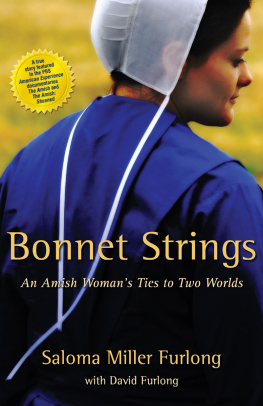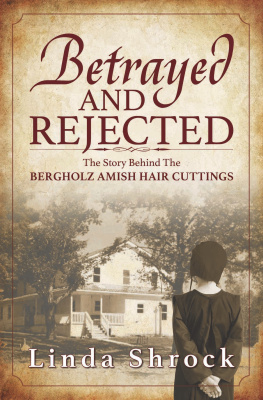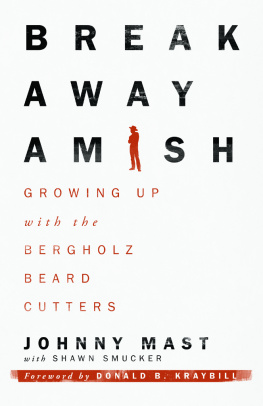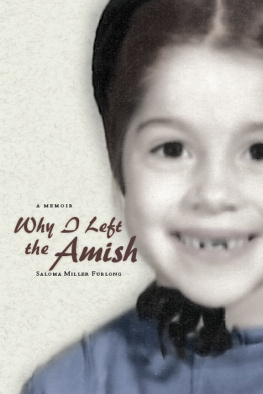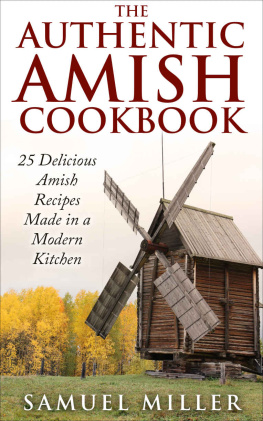Bonnet Strings
This story includes all the elements of a good romanceattraction, danger, secrets, beautiful scenery, obstacles, culture clashes, and old-fashioned chivalry. You will cheer for Saloma and the sense of self God placed in her.
Shirley Hershey Showalter, author of Blush
Saloma Miller Furlong explores the complexities of duty and desire, defining the careful balance between familial responsibility and the pursuit of true love. You will rejoice with Saloma as she acquires independence from her previously cloistered lifestyle among the Amish and recall your own first glimpse of someone you knew would capture your heartand therefore change your world forever. Bonnet Strings is a memoir not to be missed.
Jolina Petersheim, author of The Outcast
In this memoir of the Bildungsroman genre, Saloma Miller Furlong writes carefully and artfully of the inner pain and joy she experiences as she finds her way, both outside of her home community and inside it. In addition, her partner Davids voice provides readers with a poignant lens with which to view Furlongs journey.
Vi Dutcher, professor of language and literature, Eastern Mennonite University
Bonnet Strings paints an intimate portrait of one womans struggle to find an authentic path for herself among the Amish. Saloma Miller Furlong vividly portrays the warmth and love in her tight-knit community but also what it was like to try to live according to her communitys strict rules. The reader cheers as Furlong overcomes obstacles to create a life true to herself and her faith.
Lucinda Martin, researcher at Research Centre Gotha, University of Erfurt, Germany


Introduction
If God had wanted me otherwise, He would have created me otherwise.
Johann Wolfgang von Goethe
I t was a mismatch from the startbeing born with a nature that just did not fit into my Amish culture. For as long as I can remember, questions had bubbled up from within. I tried to emulate other girls who were quiet and submissive. Id practice folding my arms in the demure way of Amish girls, looking down in front of me instead of looking directly at others and not talking. That never lasted more than five minutes before Id forget and become myself again.
I was often labeled a chatterbox or a handful or, worse yet, dick-keppich (stubborn) and rebellious. It was a terrible feeling, knowing I didnt fit into the only community I knew. As I was growing up I learnedat least if I believed the preachersthat leaving the Amish was not an option. They claimed because we were born Amish, God wanted us to stay Amish, and if we didnt, then all hope of our salvation would be lost. I used to wonder, why would God give me this inquisitive nature if its wrong to ask questions? If I asked this out loud, my mother would say I shouldnt be asking such questions or its just the way it is.
My first book, Why I Left the Amish, tells the story of my childhood and my teenage years. That story is framed by my first semester at Smith College, when I traveled back to my horse-and-buggy world for my fathers funeral. It also tells the story of why and how I left the first time and how I came to choose Burlington, Vermont, for my new home.

On picture day in second grade at my public school, my teacher said I could stay in the classroom because she knew that the Amish dont normally allow photographs to be taken of themselves. I popped out of my seat and said, Oh, but my mother said I could be in the class picture! So when it was my turn to have my individual photograph taken, I sat up on the high stool and smiled into the lights and the camera.
Bonnet Strings continues my storya story of being torn between the Amish community where I was born and raised and the Vermont world where I experienced freedom when I was twenty years old. I reveled in my newfound freedom and established my life as Linda, the name I took for myself. I made new friends, formed a social life, made plans to take college courses, and landed my dream joba waitress at Pizza Hut!
I began dating a Yankee toymaker and street peddler, David Furlong. Our romance was still young when the Amish came to Vermont from Ohio to bring me back into the fold. Thus began my nearly three-year struggle of deciding whether to submit my will and settle into Amish life, with its centuries-old traditions, or follow my desire for the independence that I had experienced during my four months in Vermont.
Meanwhile, the Yankee toymaker did not give up his quest to continue our romance. I kept telling him, Im Amish, and youre notthis relationship is impossible. David, with his quiet perseverance, kept sending me cards, conveying that he had not given up hope that our love would survive. After two years of trying to make myself Amish and still feeling like a misfit in my community, I became keenly aware of Davids outstretched hand that offered love and understanding. It seemed there was no contest.
And yet it was not as simple as that.
From the time Amish children can understand the concept, they know they are different from people out in the world. The first things that identify them as different are the obvious ones, such as plain clothing, traditional dialect, and riding in horse-drawn buggies. Everything about their way of life and belief system shapes and reinforces this identity. With this training, most people who are born and raised Amish are well suited for the life the community prescribes from the cradle to the grave. But occasionally there are people born into the culture who just do not belong there. I was one of those.
A psychologist once told me that most people who leave an insular culture usually need to find out who they are, or discover their self, once they leave. He said, You are different. I think you had a self while you were in the community.
I have contemplated this thought often. No wonder I had to leave.
When I was twenty-three years old, contemplating leaving again, with David waiting in the wings, I felt the weight of the deep and abiding traditions of my ancestors on my shoulders. This made the question of whether or not to leave a tough one. Eventually I took the hand that offered me love.
Bonnet Strings is a universal story of choosing between ones need for community and belonging and the desire for freedom to walk the path that is most authentic to who we are. This usually involves overcoming adversities and learning and growing through our struggles and the mistakes we make.
This book has three parts. The first part is about adjusting to my life in Burlington, Vermont. I met David two months after arriving there, which is about halfway through part 1. At the end of each part, Davids voice comes into my story via a short chapter that he has written.
If I could have written Bonnet Strings without showing anyone in a negative light, I would have. Many of the people whose stories intersected with mine have matured and grown and have children of their own. Many events are central to my story, however, and would leave big holes if I were to skip them. So to protect peoples privacy, I have changed some of the names and identities.
Throughout my book, I sometimes refer to the people in my community as the Amish. It is only after I left the second time and began learning more about various Amish communities that I realized how much diversity there is among the Amish. And the diversity has increased since I left. Today there are more than 460 Amish settlements in the United States. There are as many ways to live an Amish life as there are church districts, with each bishop interpreting the

